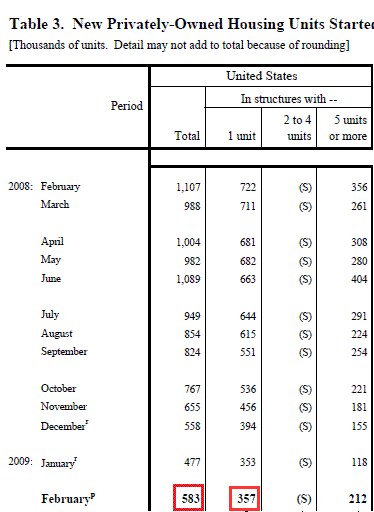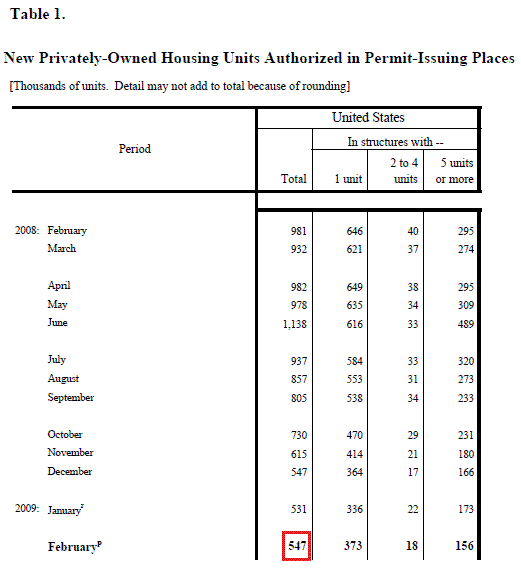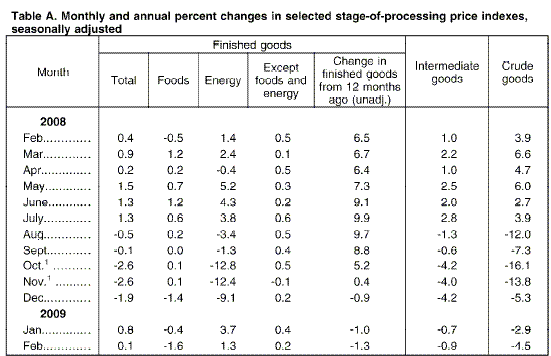MBS remains range bound, mortgage rates are slightly lower this morning....
APRIL FN30_______________________________
FN 4.0 -------->>>> +0-04 to 99-04 from 99-00
FN 4.5 -------->>>> +0-04 to 101-05 from 101-01
FN 5.0 -------->>>> +0-02 to 102-11 from 102-09
FN 5.5 -------->>>> +0-02 to 103-01 from 102-31
FN 6.0 -------->>>> +0-02 to 103-20 from 103-18
APRIL GN30_____________________________
GN 4.0 -------->>>> +0-05 to 99-06 from 99-01
GN 4.5 -------->>>> +0-05 to 101-11 from 101-06
GN 5.0 -------->>>> +0-05 to 102-26 from 102-21
GN 5.5 -------->>>> +0-04 to 103-13 from 103-09
GN 6.0 -------->>>> +0-03 to 103-26 from 103-23
Why is housing data so important?
Housing is one of the most reliable leading indicators of economic activity. Housing branches out to many industries...think about the materials that go into building a home....WOOD, STEEL, PLASTICS, WIRING, PIPING, CONCRETE, GLASS, ELECTRICITY, FURNITURE, CARPETING ,ELECTRONICS, APPLIANCES....LABOR.
Plain and Simple: Real estate is one of the first sectors to contract when a recession is looming and one of the first to show signs of recovery when economic activity picks up. So when housing data shows signs of improvement the market generally reacts favorably to the forward looking data.
Housing Starts: how much NEW CONSTRUCTION occurred for residential real estate in the previous month. This means digging has begun. Adding rooms or renovating old ones does not count, builder must be constructing new home (can be on old foundation if re-building). We get single family housing, 2-4 unit housing, and 5 unit and above housing data. Single family housing is by far the most important as it accounts for 70-80% of total home building.
Indicators like personal income, interest rates, and tax legislation(home buyer credits and mortgage interest deductibility) have big affect on Housing Starts.
from the Census Department Press Release...
HOUSING STARTS
Privately-owned housing starts in February were at a seasonally adjusted annual rate of 583,000. This is 22.2 percent (±13.8%) above the revised January estimate of 477,000, but is 47.3 percent (±5.3%) below the revised February 2008 rate of 1,107,000.
Single-family housing starts in February were at a rate of 357,000; this is 1.1 percent (±11.0%)* above the January figure of 353,000. The February rate for units in buildings with five units or more was 212,000.

BUILDING PERMITS
Privately-owned housing units authorized by building permits in February were at a seasonally adjusted annual rate of 547,000. This is 3.0 percent (±3.5%)* above the revised January rate of 531,000, but is 44.2 percent (±1.2%) below the revised February 2008 estimate of 981,000.
Single-family authorizations in February were at a rate of 373,000; this is 11.0 percent (±2.1%) above the January figure of 336,000. Authorizations of units in buildings with five units or more were at a rate of 156,000 in February

Plain and Simple: Housing Starts hit a record low in January. February data indicated that housing starts increased for first time since April 2008. This month over month uptick does not indicate the economy has hit bottom. Not being a doomsdayer...just looking past the headline. In order for one to make an accurate assumption that markets have hit bottom we will need to see a 3 or 4 month trend of steady growth in housing data...this is a START!!!
Producer Price Index
Press Release: www.bls.gov/ppi
What: PPI measures the changes in prices that manufacturers and wholesalers pay for goods during different stages of production. If businesses have to pay more for the materials they use to produce their widgets ...they are mostly likely going to pass along those additional costs to you...the consumer.
The Producer Price Index is broken down into three progressive stages of production. Crude Goods, Intermediate Goods, and Finished Goods. Finished goods is considered Headline Producer Inflation. The cost to produce a finished goods is affected by the cost of the entire production cycle so one should note which stage of production is adding the most cost to the final product.
Crude Goods: raw materials like commodities. Susceptible to supply shocks ( Oil crisis during summer of 2008)
Intermediate Good: partly finished good used in production of another good. Good has already undergone some transformational processing. (paper, car parts, fabrics)
Finished Goods: good that is ready to be sold to consumer. Inflation at this stage in the production process is usually passed along to the consumer
Core PPI: strips out the volatile costs of food and energy
Headline PPI: includes food and energy costs
Dec Total :-1.9% Dec Core: +0.2%
Jan Total: +0.8% Jan Core: +0.4%
Feb Total Consensus Estimate: +0.4%
Feb Core Consensus Estimate: 0.1%
Feb Actual PPI: +0.1%
Feb Core PPI: +0.2%

Market reaction: PPI was non-event.





